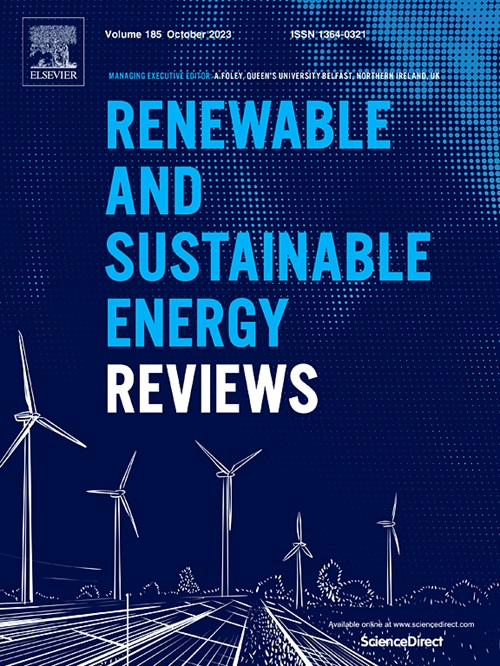Thermal models for mono/bifacial modules in ground/floating photovoltaic systems: A review
IF 16.3
1区 工程技术
Q1 ENERGY & FUELS
引用次数: 0
Abstract
Since the world's policy tends to rely on solar energy to meet energy needs, photovoltaics are considered a crucial asset that requires continuous monitoring. Several installation solutions, including different PV technologies, created challenges in providing a reliable evaluation to depend on. Thermal modeling is essential to predict the cell temperature that is utilized in anticipating the system's electrical performance, as in most commercial software. Hence, this work provides an overview of the most used thermal models for installation solutions (free-standing, roof-mounted, floating, etc.) utilizing both mono and bifacial module technology. The provided analysis is focused on evaluating the different responses of the thermal models that can be used for the same configuration and technology. A sensitive comparative analysis of the various thermal models is provided to assess their response to the climatic parameters as an input to the thermal model. The analysis revealed that for monofacial thermal models, Ross models underestimate the cell temperature at any radiation intensity, while the Faiman model using PVsyst coefficients generates the highest overestimated cell temperature among the examined models. It can be seen that the effect of wind speed reduces for a velocity higher than 10 m/s. As for the bifacial PV module, it can be noticed that the Sandia model using Bifacial optimized coefficients is very sensitive to the back surface radiation as it tends to overestimate relative to the Faiman model. Furthermore, floating PV thermal models are significantly affected by the heat transfer coefficient that usually produces a lower cell temperature.

求助全文
约1分钟内获得全文
求助全文
来源期刊

Renewable and Sustainable Energy Reviews
工程技术-能源与燃料
CiteScore
31.20
自引率
5.70%
发文量
1055
审稿时长
62 days
期刊介绍:
The mission of Renewable and Sustainable Energy Reviews is to disseminate the most compelling and pertinent critical insights in renewable and sustainable energy, fostering collaboration among the research community, private sector, and policy and decision makers. The journal aims to exchange challenges, solutions, innovative concepts, and technologies, contributing to sustainable development, the transition to a low-carbon future, and the attainment of emissions targets outlined by the United Nations Framework Convention on Climate Change.
Renewable and Sustainable Energy Reviews publishes a diverse range of content, including review papers, original research, case studies, and analyses of new technologies, all featuring a substantial review component such as critique, comparison, or analysis. Introducing a distinctive paper type, Expert Insights, the journal presents commissioned mini-reviews authored by field leaders, addressing topics of significant interest. Case studies undergo consideration only if they showcase the work's applicability to other regions or contribute valuable insights to the broader field of renewable and sustainable energy. Notably, a bibliographic or literature review lacking critical analysis is deemed unsuitable for publication.
 求助内容:
求助内容: 应助结果提醒方式:
应助结果提醒方式:


